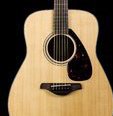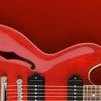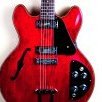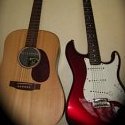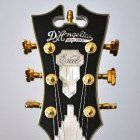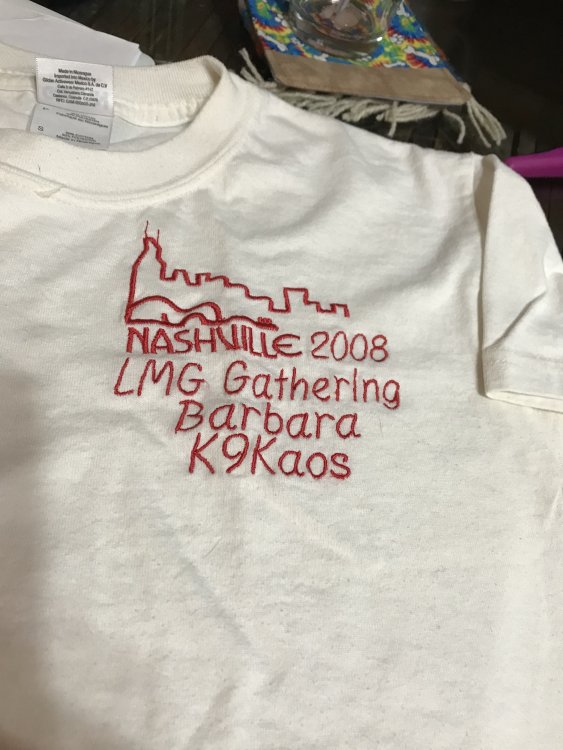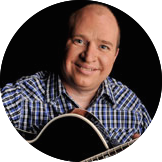Leaderboard
Popular Content
Showing content with the highest reputation on 01/19/2018 in all areas
-
Over the years Steve Krenz has created some wonderful short video lessons and tips, called Guitar Tips, Guitar Tips of the Pros, and Tip of the Month. Here is a selection of those videos from YouTube; (in no particular order, titles are at the top of each video. Not a comprehensive list, so if you find others, feel free to add any not already inserted here) I hope you find them as useful and enjoyable as I have!3 points
-
I know I'm jumping around a bit in Song Hits after ignoring Song Hits add-on course for years. I guess all my chord work for church the past 4 years is making the chords (and barres) not too bad for these songs. (S7 Day Tripper & S8 Pretty Woman) were I really fall down is the single note riff's that make these songs 'iconic'.. I've been practicing Pretty Woman a few weeks now and did a 'car practice' recording which I sent to my sister for a listen.. getting better but not gig or record worthy.. maybe by summer. just tried Song Hits Day Tripper Session 7.. barre chord chorus is the 'easiest' part of the song.. the speed of the riff's .. work in progress..3 points
-
The latest issue of the Fingerstyle Journal is available today. The Journal is a quarterly magazine that contains a wealth of material. The cost is only $24 annually and you can purchase back issues. Note: There is no print version - only electronic (pdf). I highly recommend it!2 points
-
Try this......roll your index (bar finger) slightly toward the nut while making a bar chord, it usually helps. This along with relaxing everything while getting the elbow position, wrist angle, fingers to hit all the right strings and frets.........nothing to it! Keep on getting after them barre chords.....it will all fall together with practice, patience and perseverance!2 points
-
I do the something with you tube - thanks for the encouragement, as they say misery loves company! good luck and we'll keep on plucking away at it!! Maybe by next summer we will get to lesson 9!2 points
-
Hi UncleHammy. I've been listening to Tuesday night Live Lessons for years, but I only recently joined the forum. Here's my entry -- an old favorite from the Beatles "Revolver" album. I recorded it using Presonus Studio One. I hope you enjoy it as much as I enjoyed recording it. https://soundcloud.com/user-198649149/kg-and-your-bird-can-sing-3-2-17-key-of-c-with-drums2 points
-
Here's a bonus one. Not sure it fits the theme, but I was playing around with 'Songbird' last night (mainly as vocal practice). This is a single, live take that I recorded on a little Zoom recorder then imported into Logic just to add a little reverb and compression and then lift the level. Regarding the guitar, I was talking in the chat room the other night; I'm fairly comfortable with fingerstyle now where I just set my right hand going on auto-pilot whilst playing simple chords. I have reached a psychological roadblock though about adding in melody notes (my coordination just falls apart). The instrumental middle on this (and the intro) would be much more interesting with some melody notes, hammer-ons etc. Going to make it a resolution to crack that this year! Ian2 points
-
On lesson 7 & 8 the fifth and sixth string barre chords, if it says C7 how do you know if it's a fifth or sixth string chord? My fingers are not particularly fat, but they only bend so much, how do I play a fifth string E7 without my third finger muting the third string? Also when playing 5th string barre chords can your index finger touch the 6th string? Fred1 point
-
I went to my local guitar store today and didn't come out with a guitar!!! I actually went to look at one in particular and, of course, fell in love with it. But didn't buy it! And my wife was with me, encouraged me to make an offer it, and I still didn't! And I'm feeling ok! All I came out of the store with was a hygrometer! A D'Addorio Planet Waves Humiditrak. It monitors the humidity in my music room and pushes the results to my phone. I've gone way too long without humidifying my music room and I finally started a humidifier this morning. I have no idea how much damage I done to my guitars. But since I started the humidifier I figured I need to see how it works. The guy that owns the guitar store recommended this one and he uses it in his house. It will be interesting to see how it works! Currently 42% humidity and 71 F! What is everyone else using to humidify your music room and monitor?1 point
-
ok.. here is a quick recording in my car at lunch.. battery amp on the foot-well floor, a $50 Academy Strat clone and a phone recording it all from on top of the dash. this is the bridge of Pretty Woman in all barre chords. I hate fingering Dm in open.. I jump to Dm 5th fret over open chords jammed in the front seat of the car.. (embarrassment time... ) Pretty woman barre chord bridge jan19-2018.mp31 point
-
@Wim VD You’re welcome. I feel humbled by your favourable comment. I’ve never had the gift of being able to play by ear and now my condition isn’t ideal, either. I have to wear hearing aids and deal with tinnitus. Fortunately, these days the abundance of resources makes it possible to learn music theory thoroughly and compensate for the ear’s shortcomings to a substantial degree. My resource library is relatively big. I’m grateful to those who developed and codified the language of music.1 point
-
@Wim VD The reason the chord tone approach sounds better to you is because you are using the harmonic framework of the progression. Chord tones are the safe, sweet notes the chords or arpeggios are made of. They are the notes you can hold or land on. When it comes to the seventh chords, the third and the seventh are the guide tones and you should target one of them when making the chord changes. Of course, the chord tones alone don’t make a great solo, but if you start with them, you will get the harmony into your ear and you will hear the chord changes. Then, you can start adding approach notes and here the devil is in the details that are way beyond the scope of a simple post. So you decided to focus on learning the arpeggios starting with the dominant 7th chords. That’s a good idea because all you need for a traditional 12 bar blues is this one type of chord. The harmonic simplicity and structural economy of the 12 bar blues makes it the perfect vehicle for tackling soloing and improvisation in the early stages. So again, you start with chord tones only, then you add approach notes thereby building your solo from the bottom up. You can learn the arpeggios in isolation or from the perspective of its parent scale. The mixolydian which can be thought of as a major scale with a lowered seventh is the parent scale for a dominant 7th chord. After you’ve completed Session 19, you may want to reach for a resource that thoroughly deals with soloing and improvisation in your chosen genre.1 point
-
Regarding the 6th string on 5th string barre chords, you can touch it to mute it as previously stated. You can also go ahead and extend the barre to the 6th string and play it if you want. Remember, the 6th string notes are the same as the first string notes, just two octaves lower. If you extend the barre to the 6th string and play it, you're just playing the fifth of the chord as the bass note. For example, say you're playing a 5th string barre C chord. Your barre is at the third fret, so if you extend the barre to the 6th string, you're adding a low G, the chord's fifth, as the bass note. That could be useful if you want to play an alternating bass between the 1st and 5th, or there may be other times it could come in handy if you want that lower bass note or just a slightly fuller sounding chord. I don't recommend it at this stage as barre chords are hard enough to learn, but file it away for future reference.1 point
-
Wim, I am about the same spot as you, " making my first small steps in soloing". I need to study Gerard's link a little more to try and figure this difference between chord tone and scale tone. I have this book, Chord Tone Soloing. A Guitarist's Guide to Melodic Improvising in Any Style. It's a Hal Leonard book written by Barret Tagliarino. I also have a couple TrueFire courses on the subject.1 point
-
Here is a link to www.classicalguitarblog.net. They have some useful free stuff available. I especially found the Guiliani 120+ exercises really good and nicely arranged. It is basically the classic Guiliani studies but with a different approach.1 point
-
Hey Fred, You got some great advice above. If it says, C7 how do you know if it's a 5th or 6th string barre chord? The answer is "Yes". Unless the music states what it should be and you want to follow the music dogmatically, as Mandy said above, chose whatever is "the closest together or sound(s) the best". For that matter if it just says C7 what's to keep you from playing an open C7 if you want? It's your call. I'm currently in S13, "Playing the Blues". In it is a perfect example. In the video Steve has us playing a C Blues 12 bar blues progression. You probably don't know what a I-IV-V blues progression is yet. But in the key of C the chords are C - F-G. Steve plays them as 7 chords. First time through he plays the C7 as an open chord and the F7 and G7 as 6th string barre chords. on this video he plays it through twice and then, the 2nd time through, he moves it up the neck and plays all 3 chords as barre chords. The C7 as a 6th string barre chord at the 8th fret and the F And G as 5th string barre chords at the 8th and 10th fret, respectively. So easy just to change a couple fingers and go from that C and F and back. And just move down two frets to go from G to F! I'm not suggesting you go study 13 yet but it would almost be worth it to sneak a quick peak at the video to see what I'm talkng about and show you an example. It's at 33 minutes. When playing 5th string barre chords can your index touch the 5th string? Sure. But it's important that you don't play the 6th string. You have to make sure that you only play the 5 higher strings.1 point
-
Hey Doug, I am currently working on Day Tripper. Yes, that riff is iconic and definitely a memory of my youth. I'm not sure I agree that the riff is harder than the barre chords. I struggle with, and I'm still struggling after months of working it, going from the riff to the barre chords and keeping in time. Way back when one of the monthly challenges had a topic that was appropriate for Day Tripper and I told UncleHammy I might actually post a contribution. I still haven't got it finished up. But I bought a backing track for this and am trying to learn the lead guitar part as well. Off to work on this some more in a few minutes!1 point
-
Barre cords certainly are a challenge, I have been in lessons 7&8 since May 15. Wish I could say Barre cords are done and I'm moving on. There is light at the end of the tunnel though. The support and encouragement of the community has gotten a lot of players (including me) through this difficult time. Seems barre cords are a turning point for a lot of guitar players. They quit or go on to be respectable guitarist. We must not ever forget the 3 p's. I also have dangled a carrot out for myself, a new guitar when completing session 8. Probably not any two guitar students will approach their guitar journey the same. The important thing is to one day make that wonderful music that only comes from the guitar.1 point
-
I am glad that you have reached out to the forum Fred. The Barre chords are probably the biggest challenge in this course. I can see that you have been given lots of excellent advice already. Can I add that if you aim to place your fingers as near the the frets as you can then it will reduce the amount of pressure that you need. Try to be relaxed and take time to stop and shake out your hands and arms frequently. I used to do a few barres and then rest and shake my hands for a few seconds and then do some more. Stop when it hurts, do not work through the pain in your elbow. I found that my barre chords got better when I finally decided that I did not care about how they sounded any more. I was just going to play them. I just relaxed and concentrated on my hand placements and they just started to sound better! As to the question about how you know whether to play a 5th or 6th string Barre chord, if you are in an exercise (or playing a chord progression) and it does not say which to play then you can choose (as long as you remember the appropriate shape for the string you have based it on). Guitar players will pick the chords which are the closest together or sound the best. Keep at it Fred, just a little bit every day and you will get them sounding better. Please also do other guitar learning, there is also merit in reviewing past lessons or staring the next one also. Best wishes Mandy1 point
-
Another thing you can do to try a different angle is to raise the neck of the guitar higher. I find if the neck is higher, it feels less awkward trying to get my fingers to the proper positions for some chords, especially going higher up the neck with some barre chords.1 point
-
1 point
-
As far as the index finger coming off the first string I try and get my thumb right under the Barre allowing for even pressure. It took me a long time to ring the chords and now my battle is changing chords in time. Complete muscle memory issue that I am working on.1 point
-
I haven't had elbow pain mainly pain to the outer wrist and the Big muscle on my outer hand. I learn best by watching so maybe find some you tube videos of a good teacher, like Justine Sandercore or just watch Steve and note their mechanics and try to duplicate. Of course every human is different so watch a bunch and see if you can find something that works for you. Good luck. I'm struggling with this too but we can get this!!1 point
-
That does help because I have been on lesson 7 since July also and recently pushed to 8. Thanks for the advice, I do try to bend the wrist, but when I do the index finger comes off the first string! Also, when I take a rest from playing my elbow is so sore and tight to stretch out, I wonder if I'm using the wrong muscles?1 point
-
Fred I am by no means a Barre chord expert seeing as how I've been on lessons 7 and 8 since last July. Based on my experience the way to not mute strings is to bend your wrist as much as you can so as to try and get straight up and down on the Barre chord. The wrist will bend more and more if you challenge your comfort level daily. And as to your other question, I find it helpful to touch the 6th string on 5th string Barre chords because it mutes it and your strum doesn't have to be perfect. Hope that helps. Probably not! Robert1 point
-
I see you are in the same boat I am in.... When I started to try to streamline and go paperless, it made me review the shocking amount of resources I currently have. I am beginning to think I may have a slight problem, lol!1 point
-
Here is my contribution for this month. I bought a Udemy course 'Audio + Music Production in Logic Pro X' in the Black Friday sale and have been slowly working through it. I have to say that it's brilliant, I'm having lot's of 'so that's what that function is for' and 'so that's how you do it' moments. I thoroughly recommend the course if you have Logic Pro X. Anyway, this month I decided to submit a multi-track effort to practice and apply some of what I've learned (before I forget it all). Ian1 point
-
Just what I need Dave, more resources that I can't get to. Could you find a website that could give me more practice time? That would be really useful. I am currently working on osmosis, if I keep buying resources surely some of them will be absorbed just from proximity, right???1 point
-
@rkl312 You may want to try Music Reading for Guitar THE COMPLETE METHOD by David Oakes. It’s currently not available on the US amazon site, so I’m giving you the Canadian link.1 point
-
Hi rkl312. Sight reading involves more than just reading through music. Your aim is to be reading at least one or two notes ahead of where you are playing. Initially you won't be able to do that, but that should be your goal. Some people can read an entire measure ahead of where they are playing, but start by *trying* to read one note ahead. It's similar to keeping your eyes looking further down the road when you drive rather than to just look at what is immediately in front of your vehicle. And don't stop to fix mistakes. Try to keep an even tempo and play through an entire song without stopping. True sight reading involves reading a piece of music for the first time--never having seen it previously. But if you aren't regularly practicing a particular piece music, you can periodically pick it up and just run through it from start to finish. I have a music education degree. During my instrumental methods class (class to learn how to teach instrumental music), my professor told us what he did to teach his students how to sight read. He held up a sheet of paper over top of the music. As his students would sight read through the piece, he'd move the paper covering the notes the student was to be playing making them look ahead a beat or two. Give it a try. It's something you will need to focus on until it becomes second nature.1 point
-
1 point

